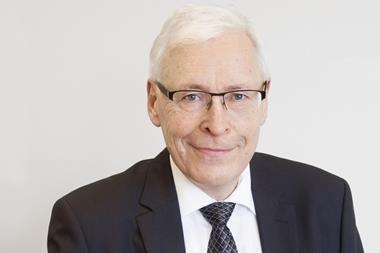The expansion of private pension funds looks set to continue as reforms are implemented. Portugal’s pay-as-you-go system evolved in stages and a variety of limited regimes have been introduced since the beginning of the century.
The social security system comprises two main regimes: the general system, covering private-sector workers, and the system for public sector employees. A special regime applies to the banking sector.
Of the two main regimes, the general system is by far the more important. It comprises three basic schemes:
q the general contributory scheme, covering dependent and self-employed workers outside the public sector. Payments made by this regime include pensions for old-age, invalidity and survivors; insurance against temporary loss of income due to sickness, occupational diseases, maternity and unemployment; and other welfare benefits;
q the voluntary insurance scheme, providing protection to persons not covered by the general contributory scheme. Benefits include old-age, invalidity and survivors’ pensions, death grants and other welfare benefits. Special conditions govern entitlement to additional benefits, and
q the non-contributory scheme, providing minimum protection to persons not covered by any of the previous schemes, whose monthly income is below a certain limit and who are suffering economic and social hardship. Other benefits include family and children’s allowances, subsidies to young people and benefits for the disabled.
The system for public sector employees is managed by the Caixa Geral de Aposentações (CGA). Pension benefits are higher than those disbursed under the general contributory scheme, although employee contribution rates are similar. The government funds the difference between contributions and pension expenditure. Non-income-related welfare benefits are similar to those provided under the general contributory.
Government has recently announced the intention to extend to public sector employees the rules applicable to general workers. This includes labour and social security laws.
The special regimes applicable to the banking and former public communication companies have been a main driving force for pension funds development, as such regimes are financed through funded systems.
There are also several other private pension funds, all of them managed by authorised pension fund management companies or insurance companies authorised to carry on life business, which provide pensions to old-age, disability and survivors as well as death grants, health and maternity benefits.
Pension benefits in the general contributory scheme are earnings-related. They are calculated on the basis of a fixed accrual rate, the assessed income (income of the contributor over a specified period of time prior to retirement) and the number of years of contributions. At present, the reference income to compute pensions is the highest 10-year average income of the last 15 years. The accrual rate is a flat 2%, which is high by international comparison. The government has already announced its intention to change the formula, so that reference income will take into consideration the complete careers.
Pensions cannot exceed 80% of assessed income. From December 2000, the minimum in the general contributory scheme of E179.57 (Esc36,0000) a month amounts to 53% of the national minimum wage.
The current retirement age is 65 years for both men and women. A minimum of 15 years of contributions to qualify for an old-age pension at retirement age. Forty years of contributions are required for the maximum pension. No formal indexation mechanism governs the annual pension adjustment, which is based upon ad hoc government decisions. Pensions have been subject to taxation from 1989, but benefit from preferential treatment, the average tax rate being about 7% lower than that on earned income and the degree of progressivity being milder.
Persons in the non-contributory scheme are entitled to a social pension, provided their income is 30% or less of the national minimum wage (50% if married). Currently, the social pension of e130.93 a month corresponds to 38% of minimum wage and is only payable from the age of 65. Benefits are revalued once a year by government decree.
Contributions are the main source of finance. The total contribution rate being currently 34.75% of the gross wage, of which 23.75% is paid by employers and 11% by employees. This global rate covers contributions for pensions, work-related benefits and welfare payments, with no differentiation being made for different insurance categories. Contribution rates for the self-employed and special categories of dependent labour are lower.
System for public sector employees
The public-sector system has been much more generous than its private-sector equivalent. For employees hired before September 1993, the reference income is the income of the last month of service, against the much longer reference period in the general contributory scheme. Public employees hired after September 1993 are now subject to the same provisions as those applicable to the private sector. However, with around 98% of public employees being currently covered by the previous generous provisions, pension expenditure is set to rise rapidly relative to GDP over the medium run. Saving from the harmonisation will be slow to materialise, the full effect taking an estimated 40 years.
As regards contributions, they amount to 10% of gross emoluments – 7.5% for old-age and invalidity pensions and 2.5% for survivors’ pension. An additional 1% of gross salary is paid for medical assistance.
Pension funds have expanded rapidly since their inception in 1987, especially in the banking sector, part of which is not covered by the general system. Under current legislation, these optional schemes are managed, on a segregated basis, by authorised life insurance and pension fund management companies.
The employer contributions are tax-deductibles, provided the scheme complies with rules applicable to the general system, eg, non-discrimination, retirement age etc.
The gradual implementation of a reform of the public social security and the introduction of a ‘second pension’ will further stimulate the expansion of private pension funds.














No comments yet